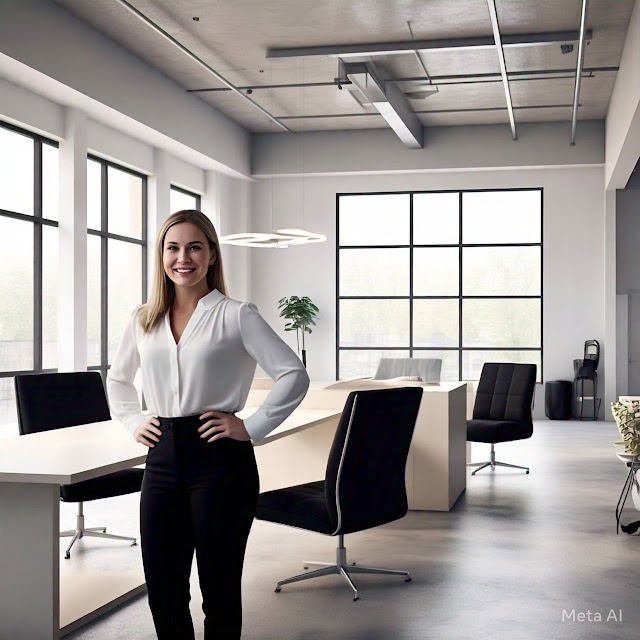Commercial Interior Designers: Shaping Spaces for Success
Understanding the Scope of Commercial Interior Design
Commercial interior design encompasses a broad spectrum of projects, from small retail spaces to expansive corporate offices. It goes beyond mere decoration, encompassing a comprehensive approach to design that considers:
- Functionality: Optimizing space utilization, workflow, and user flow to enhance efficiency and productivity.
- Aesthetics: Creating a visually appealing and inviting atmosphere that aligns with the brand identity and target audience.
- Ergonomics: Designing spaces that prioritize comfort, safety, and accessibility for all users.
- Sustainability: Incorporating eco-friendly materials, energy-efficient lighting, and sustainable practices.
- Technology Integration: Integrating technology seamlessly into the design to enhance communication, collaboration, and user experience.
- Budget Management: Managing project costs effectively while delivering high-quality results.
- Project Management: Overseeing all aspects of the design process, from initial concept to final execution.
Key Services Offered by Commercial Interior Designers
Commercial interior designers offer a wide range of services to meet the diverse needs of their clients. These services typically include:
1. Space Planning and Programming
This crucial step involves understanding the client's business goals, workflow, and space requirements. Interior designers analyze existing spaces, identify opportunities for optimization, and create functional layouts that support the client's objectives. They consider factors such as:
- Number of employees and their work patterns
- Traffic flow and circulation
- Meeting and collaboration spaces
- Storage and equipment requirements
- Accessibility and safety regulations
2. Conceptual Design and Branding
Based on the client's brief and the space planning, interior designers develop initial concepts that translate the brand identity into a tangible design language. They create mood boards, sketches, and 3D renderings to illustrate the proposed design aesthetic, incorporating elements such as:
- Color palette and material selection
- Furniture and lighting choices
- Graphic elements and branding details
- Interior finishes and textures
- Art and decorative accents
3. Construction Documents and Specifications
Once the design concept is finalized, interior designers prepare detailed construction documents, including drawings, specifications, and material samples. These documents serve as blueprints for the construction team, ensuring that the design is implemented accurately and to the highest standards.
4. Procurement and Sourcing
Interior designers play a key role in selecting and procuring furniture, lighting, fixtures, and other finishes. They leverage their industry knowledge and vendor relationships to source high-quality products that meet the design requirements and the client's budget.
5. Project Management and Oversight
Throughout the project lifecycle, interior designers act as project managers, coordinating with contractors, suppliers, and other stakeholders to ensure a smooth and timely execution of the design. They monitor progress, address any challenges, and ensure that the final outcome aligns with the original vision.
6. Post-Project Support
Even after the project is completed, many interior designers offer post-project support services, such as furniture and accessories selection, artwork sourcing, and ongoing maintenance guidance. This ensures that the designed space remains functional and aesthetically pleasing over time.
The Impact of Commercial Interior Design on Businesses
The impact of commercial interior design on businesses extends far beyond aesthetics. Well-designed spaces can significantly contribute to:
1. Employee Productivity and Engagement
Ergonomic workspaces, ample natural light, and collaborative spaces promote a positive work environment that enhances employee well-being and productivity. When employees feel comfortable and inspired, they are more likely to be engaged in their work, leading to improved performance and reduced absenteeism.
2. Customer Experience and Brand Perception
Retail spaces, restaurants, and hospitality venues benefit from thoughtful interior design that reflects the brand identity and creates a memorable customer experience. A visually appealing and well-organized space can attract customers, enhance their perception of the brand, and encourage repeat visits.
3. Business Efficiency and Cost Savings
Functional layouts, optimized space utilization, and energy-efficient design features contribute to increased efficiency and reduced operational costs. By creating spaces that support smooth workflows and minimize wasted space, commercial interior designers help businesses optimize their resources and maximize their return on investment.
4. Health and Well-being
Considerations for health and well-being, such as air quality, lighting, acoustics, and biophilic design, are increasingly important in commercial interiors. By incorporating these elements, designers create spaces that promote physical and mental well-being, contributing to a healthier and more productive work environment.
5. Sustainability and Environmental Impact
Sustainable design practices, such as using eco-friendly materials, incorporating natural light, and optimizing energy efficiency, are essential for reducing environmental impact. By embracing sustainability, commercial interior designers help businesses demonstrate their commitment to corporate social responsibility and contribute to a greener future.
Choosing the Right Commercial Interior Designer
Selecting the right commercial interior designer is crucial for the success of any project. Here are some key factors to consider when choosing a designer:
- Experience and Portfolio: Look for designers with a proven track record in similar projects, showcasing a portfolio that aligns with your vision.
- Design Philosophy and Style: Ensure the designer's design philosophy and aesthetic preferences resonate with your brand identity and project goals.
- Communication and Collaboration: Choose a designer who is communicative, responsive, and collaborative, willing to listen to your needs and provide clear explanations.
- Budget and Timelines: Discuss budget constraints and project timelines upfront to ensure alignment and a smooth project flow.
- References and Testimonials: Seek recommendations from colleagues or industry contacts, and review online testimonials to gauge the designer's reputation and client satisfaction.
Conclusion
Commercial interior design is a vital aspect of creating successful and thriving businesses. By combining aesthetics, functionality, and user experience, commercial interior designers shape spaces that inspire employees, attract customers, and enhance brand perception. They play a key role in optimizing space utilization, promoting efficiency, and contributing to the overall success of organizations. Choosing the right commercial interior designer is an important step in transforming spaces into environments that support business growth and well-being.




Komentar
Posting Komentar